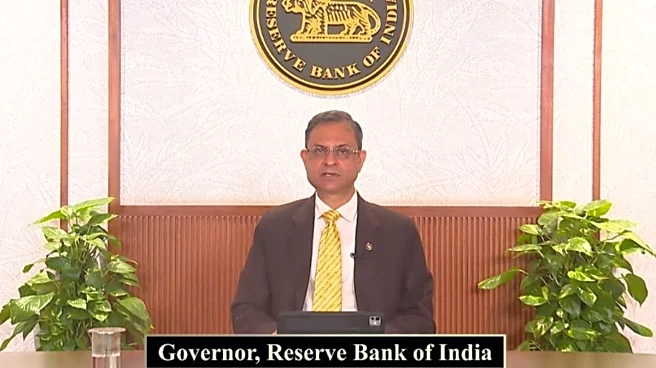What is the story about?
The Reserve Bank of India (RBI) has released the draft Foreign Exchange Management (Borrowing and Lending) (Fourth Amendment) Regulations, 2025, proposing updates to the 2018 framework. The draft aims to streamline rules for Indian entities borrowing from or lending to overseas parties under FEMA, 1999.
The regulations will take effect once notified in the official gazette, and stakeholders are invited to provide feedback.
Updated definitions and scope
The draft revises key definitions to provide clarity and align them with current financial practices. Terms such as external commercial borrowings (ECB), external commercial lending (ECL), recognised lenders, authorised dealers, benchmark rates, net worth, and cost of borrowing are now clearly defined.
The changes aim to standardise interpretation and reduce ambiguity in cross-border borrowing and lending transactions.
New restrictions on use of borrowed funds
The draft introduces restrictions on the use of borrowed funds to prevent their diversion into unregulated or high-risk activities. Funds cannot be used for chit funds, Nidhi companies, agricultural or plantation activities not allowed under foreign investment rules, real estate businesses including farmhouses, trading in transferable development rights, or on-lending outside approved channels.
Investments in securities are limited to permissible mergers, overseas investments, or primary market instruments intended for on-lending to eligible borrowers. These measures are designed to ensure that borrowed funds are used for productive and compliant purposes.
Revised ECB framework under Schedule I
The amendment revises the ECB framework, defining eligible borrowers as entities registered in India, except individuals.
Entities under restructuring or insolvency can raise ECB if permitted by the resolution plan, while borrowers under investigation must disclose such proceedings to the authorised dealer bank.
Recognised lenders include any non-resident entity and overseas or IFSC branches of RBI-regulated banks. Borrowings can be in foreign currency or Indian rupees, and currency conversion is permitted under specified conditions.
Instruments such as foreign currency convertible and exchangeable bonds remain within the ECB category. Borrowing limits are set at the higher of $1 billion or 300% of the entity’s net worth, while financial sector-regulated entities are exempt from these limits.
Minimum average maturity periods are generally three years, with certain allowances for manufacturing companies.
Borrowing costs must reflect market rates, and drawdown is allowed only after obtaining a Loan Registration Number, with unutilised funds held in specified accounts or deposits.
Security, conversion and refinancing
Borrowers may provide security on assets in favour of overseas lenders under defined conditions. Existing ECBs can be refinanced without exceeding the original cost or maturity terms. Conversion of ECBs into equity instruments is permitted with lender consent and in compliance with FEMA regulations. Changes to loan terms require lender approval and adherence to reporting procedures.
Reporting requirements strengthened
The draft reinforces timely reporting requirements. Borrowers must obtain an LRN using Form ECB, report drawdowns and repayments through Form ECB 2, and submit revised forms for any changes in loan structure.
Delays in submission may attract late fees, ensuring compliance and better monitoring of cross-border borrowing.
The regulations will take effect once notified in the official gazette, and stakeholders are invited to provide feedback.
Updated definitions and scope
The draft revises key definitions to provide clarity and align them with current financial practices. Terms such as external commercial borrowings (ECB), external commercial lending (ECL), recognised lenders, authorised dealers, benchmark rates, net worth, and cost of borrowing are now clearly defined.
The changes aim to standardise interpretation and reduce ambiguity in cross-border borrowing and lending transactions.
New restrictions on use of borrowed funds
The draft introduces restrictions on the use of borrowed funds to prevent their diversion into unregulated or high-risk activities. Funds cannot be used for chit funds, Nidhi companies, agricultural or plantation activities not allowed under foreign investment rules, real estate businesses including farmhouses, trading in transferable development rights, or on-lending outside approved channels.
Investments in securities are limited to permissible mergers, overseas investments, or primary market instruments intended for on-lending to eligible borrowers. These measures are designed to ensure that borrowed funds are used for productive and compliant purposes.
Revised ECB framework under Schedule I
The amendment revises the ECB framework, defining eligible borrowers as entities registered in India, except individuals.
Entities under restructuring or insolvency can raise ECB if permitted by the resolution plan, while borrowers under investigation must disclose such proceedings to the authorised dealer bank.
Recognised lenders include any non-resident entity and overseas or IFSC branches of RBI-regulated banks. Borrowings can be in foreign currency or Indian rupees, and currency conversion is permitted under specified conditions.
Instruments such as foreign currency convertible and exchangeable bonds remain within the ECB category. Borrowing limits are set at the higher of $1 billion or 300% of the entity’s net worth, while financial sector-regulated entities are exempt from these limits.
Minimum average maturity periods are generally three years, with certain allowances for manufacturing companies.
Borrowing costs must reflect market rates, and drawdown is allowed only after obtaining a Loan Registration Number, with unutilised funds held in specified accounts or deposits.
Security, conversion and refinancing
Borrowers may provide security on assets in favour of overseas lenders under defined conditions. Existing ECBs can be refinanced without exceeding the original cost or maturity terms. Conversion of ECBs into equity instruments is permitted with lender consent and in compliance with FEMA regulations. Changes to loan terms require lender approval and adherence to reporting procedures.
Reporting requirements strengthened
The draft reinforces timely reporting requirements. Borrowers must obtain an LRN using Form ECB, report drawdowns and repayments through Form ECB 2, and submit revised forms for any changes in loan structure.
Delays in submission may attract late fees, ensuring compliance and better monitoring of cross-border borrowing.
Do you find this article useful?
/images/ppid_59c68470-image-175948753733773491.webp)

/images/ppid_59c68470-image-175930761925231898.webp)
/images/ppid_59c68470-image-175921753054442196.webp)

/images/ppid_59c68470-image-175947509156388179.webp)
/images/ppid_59c68470-image-175939008676415211.webp)
/images/ppid_a911dc6a-image-175932133947720706.webp)




/images/ppid_59c68470-image-175930506292435250.webp)


